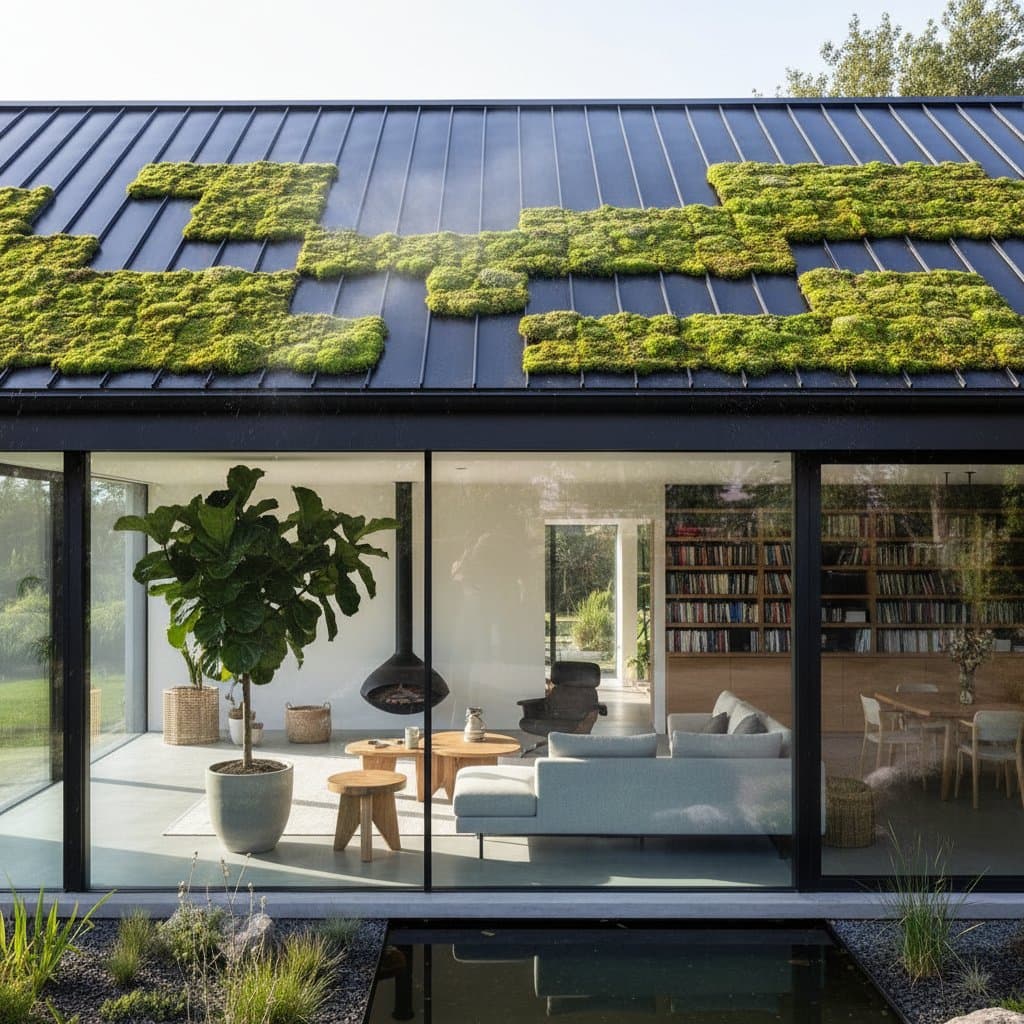How Living Moss Systems Keep Metal Roofs 25°F Cooler
Many homeowners experience uncomfortable indoor heat during summer, particularly with metal roofs that absorb sunlight rapidly. These roofs offer durability and a modern appearance, yet they often lead to higher cooling demands. Living moss systems provide a natural remedy, maintaining roof surfaces up to 25°F cooler while introducing an eco-friendly, verdant element.
The concept of moss on a metal roof may initially seem unconventional. However, this living covering functions as effective insulation, moisture retainer, and temperature moderator. Homeowners benefit from reduced energy expenses, enhanced roof protection, and increased environmental integration through these systems.
The following sections detail the mechanisms and advantages of living moss on metal roofs.
1. Cooling Mechanism of Living Moss
Metal roofs conduct heat efficiently, raising interior temperatures and straining air conditioning units. Living moss creates a protective barrier that intercepts solar radiation. It captures moisture from precipitation or humidity, which evaporates to dissipate heat.
This process lowers roof temperatures by as much as 25°F relative to untreated metal. The result includes reduced load on HVAC systems and more consistent indoor climates. Installers offer modular moss panels or mats with secure attachments for metal roofs, ensuring compatibility with standard structures due to their light weight.
2. Minimal Maintenance Requirements
Concerns about upkeep often deter interest in living roofs, yet moss proves exceptionally low-effort. It grows without soil, eliminates the need for trimming, and sustains itself on ambient moisture and airborne nutrients. Supplemental watering occurs only during prolonged droughts.
Annual inspections involve clearing debris like fallen leaves or twigs. In arid conditions, brief hose applications restore hydration. This approach demands far less time than traditional landscaping.
3. Enhanced Roof Durability
Intense sunlight and thermal cycling accelerate wear on metal roofs through expansion and contraction. Moss absorbs ultraviolet rays, preventing direct exposure to the underlying material. This shielding preserves the roof's integrity and maintains its finish over extended periods.
The moss layer regulates moisture release, avoiding sudden shifts that promote corrosion. Consequently, repair needs decrease, and longevity increases. In sunny climates, this protection yields substantial long-term value.
4. Environmental and Sustainability Benefits
Living moss aligns with green building principles by requiring no chemical inputs. It sequesters carbon dioxide and releases oxygen, contributing to improved local air quality. Additionally, it moderates stormwater by filtration and gradual release, easing burdens on drainage systems.
Such roofs mitigate urban heat islands through surface cooling. Modular designs often incorporate recycled components, amplifying their ecological footprint. Homeowners thus support biodiversity while enhancing property resilience.
5. Step-by-Step Installation Process
Adopting a living moss system involves minimal disruption to existing roofs. Pre-cultivated panels attach via specialized clips or adhesives formulated for metal. These flexible units accommodate contours and cut to fit around protrusions like vents.
For modest areas such as patios or outbuildings, DIY moss sheets establish growth progressively. Preparation includes verifying drainage and surface cleanliness. Post-installation, the moss integrates within weeks, yielding full coverage.
6. Visual and Design Enhancements
Moss introduces organic texture that complements metal's sleek profile, creating a harmonious blend of nature and architecture. This coverage imparts a distinctive, serene aesthetic suitable for diverse settings, from cityscapes to countryside.
Seasonal variations add dynamism, with vibrant hues post-rainfall and subdued tones in drier weather. The result fosters biophilic connections, softening metallic elements into artistic expressions.
7. Quantifiable Energy Efficiency Gains
A 25°F temperature reduction directly correlates with decreased heat gain, easing air conditioning demands. Electricity consumption drops, yielding savings that recoup installation expenses over time. Equipment longevity improves with lighter operational loads.
Overall home comfort rises as attics and upper rooms maintain steadier temperatures. In high-insolation regions, these effects prove particularly impactful.
8. Long-Term Integration and Expansion
Established moss evolves into an integral home feature, dampening rainfall noise and diffusing light softly. It cools ambient air on intense days and expands naturally to seal imperfections.
Some residents incorporate adjacent low-growing plants like sedums, leveraging moss's soil-free nature for simple additions. Maintenance focuses on observation, allowing natural processes to dominate.
Steps to Implement Your Moss Roof System
Evaluate your roof's pitch and exposure to determine suitable moss varieties. Consult certified installers for site assessments and custom panel designs. Budget for initial outlay, factoring in rapid payback through efficiency gains. Monitor early performance to ensure optimal hydration and growth, securing years of cooler, greener living.
